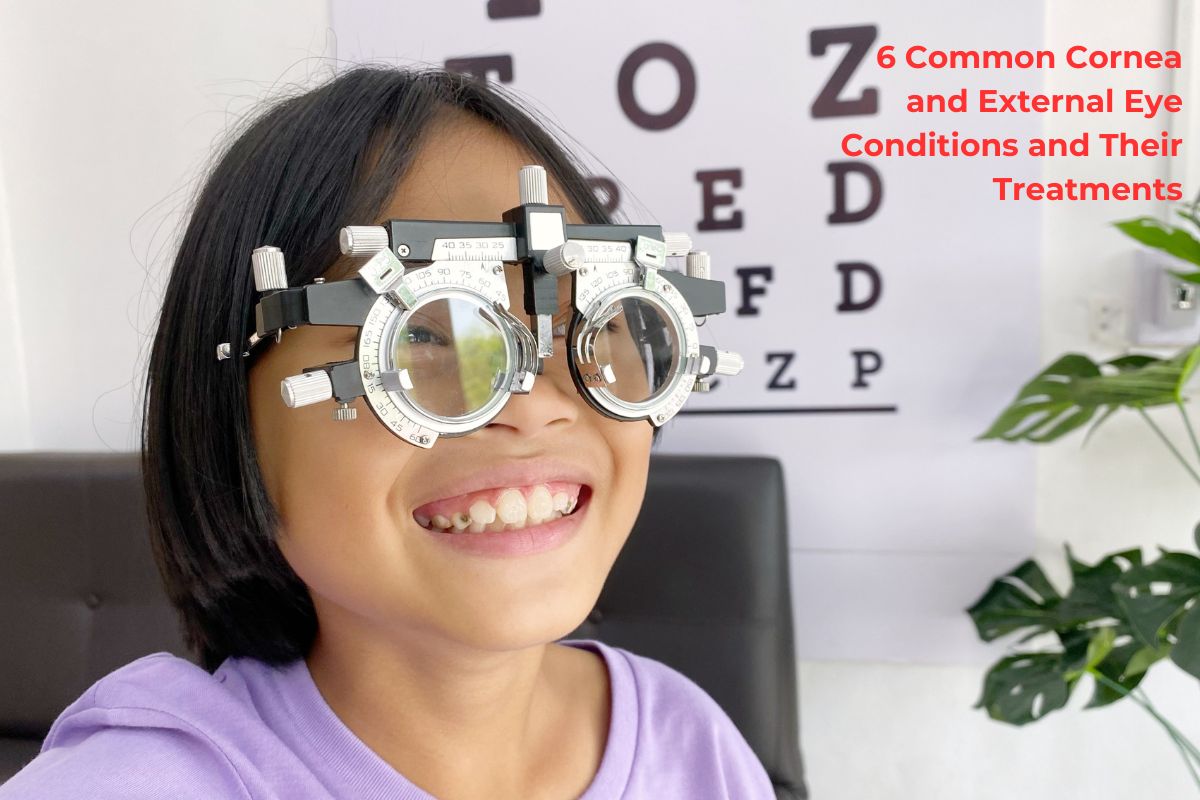
- Published by: Tutor City
- September 02, 2024
- Lifestyle
6 Common Cornea and External Eye Conditions and Their Treatments
The cornea and external structures of the eye are vulnerable to a range of conditions that, if left untreated, can significantly threaten your vision. As such, early detection and appropriate management of these issues are key to preventing long-term damage to your eyesight and ensuring a better quality of life for you.
This article explores common corneal and external eye conditions, all towards shedding light on their symptoms, causes, and the latest treatment options many ophthalmology Singapore-based centres and clinics offer. Here are six conditions that patients of all ages should know about:
1) Eye Injuries
Eye injuries can be attributed to various causes, but the most common include sports accidents, work-related hazards, or everyday mishaps like getting an object in one’s eye. These injuries range from minor scratches on the cornea to more severe damage such as ruptured eyeballs or chemical burns.
Any treatment for an eye injury will depend on its severity. Minor injuries, such as superficial scratches, may be treated with lubricating eye drops and a brief period of rest. More serious injuries, like penetration of the eye, require immediate medical attention at the emergency room.
2) Eye Allergies
Eye allergies, also known as allergic conjunctivitis, happen when the eyes react to allergens such as pollen, dust, or pet dander. These occur due to your immune system mistakenly identifying a harmless substance as a threat, leading to inflammation of the conjunctiva (the thin membrane covering the white part of the eye). Common symptoms of eye allergies include itching, redness, and watery discharge. Other allergy symptoms, like sneezing or a runny nose, may also ensue.
A typical remedy for eye allergies is over-the-counter antihistamine eye drops, as these are known to immediately alleviate symptoms. For severe cases, however, prescription medication might be required. In some instances, immunotherapy might be recommended for long-term relief.
To reduce your exposure to allergens and minimise your symptoms, avoid known allergens whenever possible. It also helps to keep your bedding and living areas regularly clean.
3) Conjunctivitis
Conjunctivitis, commonly referred to as pink eye, is an inflammation or infection of the conjunctiva. It can be caused by bacteria, viruses, allergens, or irritants. Bacterial conjunctivitis typically presents with a thick, yellowish discharge, while viral conjunctivitis typically causes a watery discharge and is often associated with a cold.
The proper treatment for conjunctivitis will depend on its root cause. Bacterial conjunctivitis, for instance, is treated with ointments or antibiotic eye drops. Viral conjunctivitis, however, generally resolves on its own, with supportive care such as artificial tears and cold compresses to relieve symptoms. Finally, allergic conjunctivitis is managed by avoiding allergens and using recommended antihistamines or anti-inflammatory eye drops.
4) Dry Eye
Dry eye is a common condition characterised by insufficient tear production or poor-quality tears, leading to a dry, gritty sensation in the eyes. Causes of dry eye include age-related changes, certain medications, environmental factors like wind or smoke, and underlying medical conditions such as autoimmune disorders like Sjogren’s syndrome. Prolonged use of digital devices and insufficient blink rates can also contribute to the condition.
Management of dry eye usually involves the use of lubricating eye drops, known as artificial tears, which help to moisten the eyes and alleviate discomfort. For more persistent cases, prescription medications like ophthalmic cyclosporine or corticosteroids may be recommended by an ophthalmologist. In severe cases, interventions like punctal plugs, which block tear drainage channels, might be used to retain moisture on the eye's surface.
5) Keratitis
Keratitis refers to inflammation of the cornea. This can be caused by a variety of factors, including infections (bacterial, viral, or fungal), injury, or exposure to environmental irritants. The condition presents with symptoms such as eye pain, redness, blurred vision, and discharge. Keratitis can also range from mild to severe, with potential complications if not treated promptly.
Treatment for keratitis varies based on the underlying cause. Bacterial keratitis is treated with antibiotic eye drops, while viral keratitis, such as the type caused by herpes simplex, requires antiviral medications.
Fungal and parasitic keratitis are managed with antifungal or antiparasitic treatments. Severe cases may necessitate surgical intervention to address complications or repair the corneal damage.
6) Corneal Abnormalities
Corneal abnormalities encompass a range of conditions affecting the shape and structure of the cornea, leading to vision distortion. Common abnormalities include astigmatism, where the cornea has an irregular shape causing blurred vision, and corneal ectasia, a progressive thinning and bulging of the cornea. These conditions can be congenital or develop over time due to various factors, including trauma or certain diseases.
Treatment options vary based on the type and severity of the abnormality. For instance, mild astigmatism is typically corrected with glasses or contact lenses. More severe cases may require surgical interventions, such as laser eye surgery or corneal transplants. For conditions like corneal ectasia, treatments might include corneal ring implantation or corneal cross-linking, a procedure that strengthens the corneal tissue to halt progression.
Your understanding and recognition of these common cornea and external eye conditions is vital for you to maintain good eye health and prevent serious complications to your eyes and the rest of your body. Many conditions related to the cornea and external eye are treatable when detected early, so if you’re experiencing pain, discomfort, or any other problems with your eyes, visit a trusted ophthalmologist and have them checked now.






